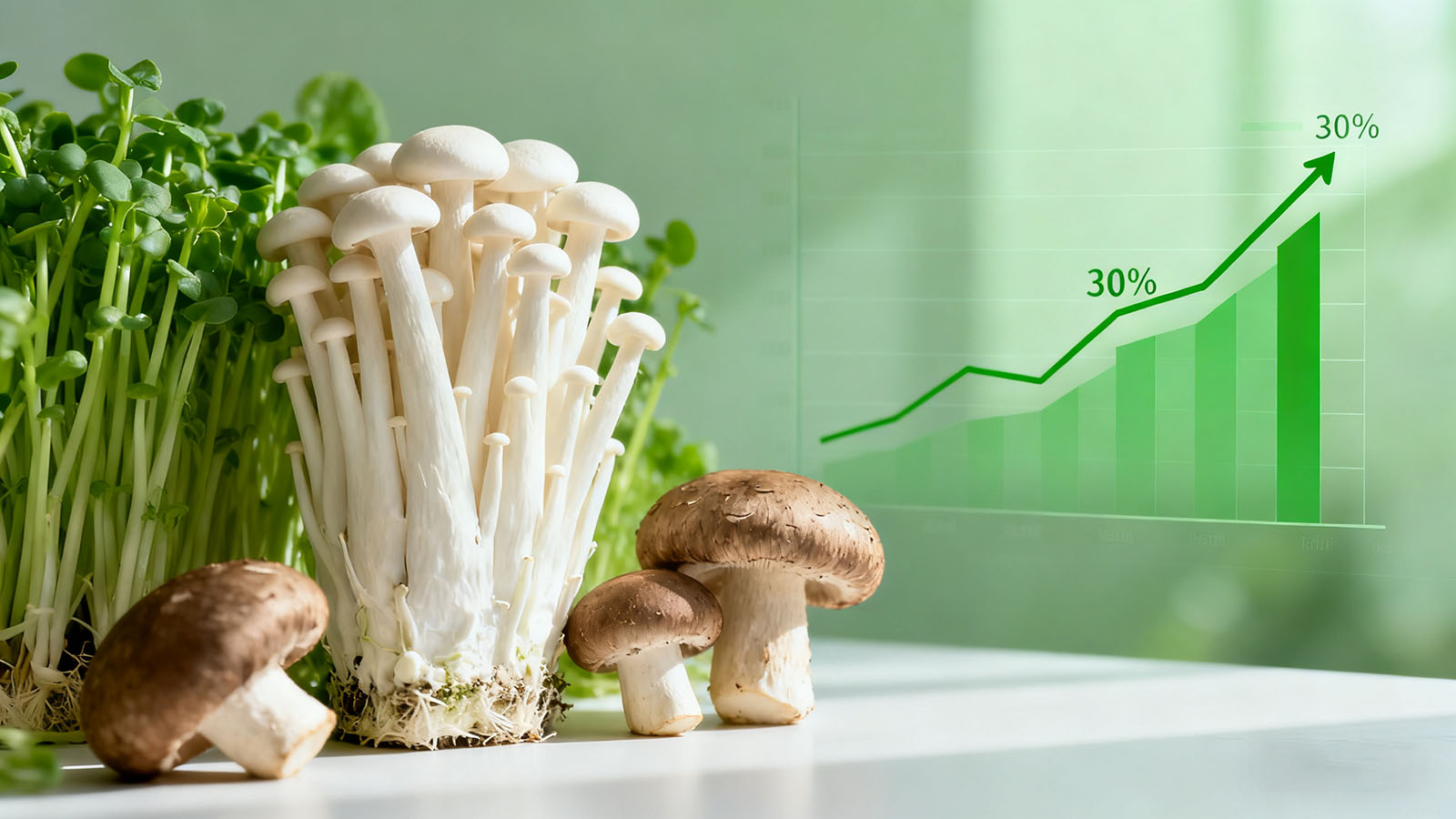
Climate change is one of the most pressing global challenges of the 21st century, and its impact extends across numerous sectors, including agriculture. Mushroom farming, which relies heavily on specific environmental conditions for optimal growth, is no exception. This article delves into the various ways in which climate change is influencing the mushroom cultivation industry, from temperature fluctuations and water availability to shifts in growing seasons and the emergence of new pests and diseases.
Temperature Variability and Its Effect on Mushroom Growth
Optimal Temperature Ranges:
Mushrooms are highly sensitive to temperature, with different species requiring specific ranges for optimal growth. For instance, the most commonly cultivated species, Agaricus bisporus (button mushroom), thrives in cool environments, typically between 12°C and 18°C. Changes in temperature due to climate change can disrupt these delicate growing conditions, potentially reducing yield and quality. Extreme heat waves, for example, can lead to poor growth or even crop failure if the temperature exceeds the threshold for these fungi.
Increased Risk of Heat Stress:
Rising global temperatures pose a significant risk to mushroom cultivation, especially in regions where high temperatures are already common. Mushrooms are susceptible to heat stress, which can result in slower growth, smaller fruiting bodies, and a higher likelihood of contamination by harmful microorganisms. Moreover, excessive heat can lead to premature fruiting or the failure of mushrooms to fruit at all, significantly affecting harvests. Farmers in warmer climates may need to invest in cooling systems or modify growing environments, which can increase production costs.
Disruption of Growing Cycles:
Mushroom farming is a delicate balancing act between temperature, humidity, and other environmental factors. With unpredictable temperature shifts brought on by climate change, the growing cycles of mushrooms can become irregular. For example, mushrooms may fruit earlier or later than usual, disrupting traditional harvest schedules and making it difficult for farmers to meet market demands. This unpredictability can reduce overall production efficiency and complicate the planning process for mushroom producers.
Water Availability and the Role of IrrigationIncreased Drought Conditions:
Climate change has led to more frequent and severe droughts in certain regions, which has a direct impact on the water availability for agricultural practices, including mushroom farming. Mushrooms require high levels of humidity and consistent moisture to thrive. A lack of adequate water sources, compounded by water scarcity issues, can result in reduced yields, smaller mushrooms, or even crop failure. The need for efficient water management and innovative irrigation techniques becomes more pressing as these conditions worsen.
Water Management Challenges:
On the flip side, excessive rainfall and flooding are also becoming more common in some areas as climate change disrupts weather patterns. Too much water can lead to issues such as waterlogging, which hampers the oxygen supply to mushrooms' growing medium and encourages the development of fungal diseases. In such conditions, farmers may need to invest in drainage systems or other infrastructure to manage excess water, which adds to operational costs. The need for adaptive strategies to cope with both drought and excessive rainfall is now a critical concern for mushroom growers worldwide.
Changes in Seasonal Patterns and Growing Conditions
Shifting Growing Seasons:
Climate change is altering the timing and duration of growing seasons, affecting the planting and harvesting schedules for mushrooms. In many regions, seasons are becoming less predictable, and temperature fluctuations are occurring outside of the historical norms. For example, warmer winters and cooler summers can shorten the growing period, while a delayed spring or early autumn may create conditions that are less favorable for mushroom growth. These shifts can complicate the crop management cycle and reduce the overall yield of mushrooms in affected regions.
Impact on Specialty Mushrooms:
Certain specialty mushrooms, such as morel mushrooms, rely on very specific environmental conditions and are sensitive to changes in seasonal patterns. For example, the morel season in certain regions has been shortened or altered as a result of changing temperatures, affecting both wild harvests and cultivated varieties. This makes it difficult for farmers to plan for specific crops, especially when their growing conditions are outside the predictable ranges due to climate variability.
Emergence of New Pests and DiseasesIncreased Pests and Pathogens:
Warmer temperatures and fluctuating humidity levels can create ideal conditions for the proliferation of pests and pathogens that affect mushroom crops. Insects like flies and mites, as well as harmful fungal species, thrive in warm, moist conditions, which may become more prevalent with climate change. These pests and pathogens not only damage mushrooms but can also introduce diseases that significantly reduce crop quality and yield. Farmers may need to invest in pest control and disease management strategies, further raising the cost of production.
New Threats from Invasive Species:
Climate change can also lead to the introduction of new invasive species that can pose a threat to mushroom crops. As global temperatures rise, certain pests and diseases previously limited to specific regions are moving into new areas, increasing the risk of crop contamination and loss. For example, the spread of certain bacterial infections that affect mushrooms has been linked to changes in climate, leading to new challenges for mushroom producers in previously unaffected regions.
Adaptation Strategies for Mushroom Farmers
Climate-Resilient Mushroom Varieties:
To combat the effects of climate change, research is being conducted to develop mushroom strains that are more resilient to temperature fluctuations, drought, and disease. By breeding or genetically modifying mushrooms to withstand extreme conditions, farmers can ensure that they have crops that can survive in changing climates. Such innovations may involve enhancing the fungi's resistance to heat stress, improving disease resistance, or optimizing water usage efficiency.
Smart Farming Techniques:
Technological advancements, such as the use of sensors, automated irrigation systems, and climate-controlled environments, are helping mushroom farmers adapt to changing conditions. Smart farming solutions allow growers to monitor and manage their crops with precision, ensuring that temperature, humidity, and water levels are maintained at optimal levels. These technologies provide farmers with real-time data to make informed decisions and react quickly to environmental changes.
Sustainable Farming Practices:
Mushroom farmers are increasingly turning to sustainable farming practices to mitigate the impact of climate change. By utilizing organic growing methods, minimizing water use, and reducing reliance on chemical pesticides, farmers can build resilience against the negative effects of climate change. Additionally, sustainable practices help preserve the surrounding ecosystems and reduce the carbon footprint of mushroom production.
Conclusion
The mushroom farming industry is undoubtedly feeling the impact of climate change, with rising temperatures, unpredictable weather patterns, water scarcity, and new pest threats all posing significant challenges. However, the industry is also adapting by implementing innovative solutions, such as climate-resilient mushroom strains, smart farming technologies, and sustainable practices. As climate change continues to affect agriculture worldwide, mushroom farmers will need to remain flexible and proactive to maintain stable production levels and meet the growing demand for mushrooms as a food source. Understanding these impacts and developing strategies to cope with them will be essential for ensuring the future of the mushroom farming industry.




创新博览会LOGO-white.png)


Copyright © China Chamber of Commerce of Food, Native Produce and Animal Products Edible Fungi and Products Branch
京公网安备11010102004652号 京ICP备05021290号-29 | Technical Support: Starify Privacy Policy Sitemap Contact Us
创新博览会LOGO.png)


